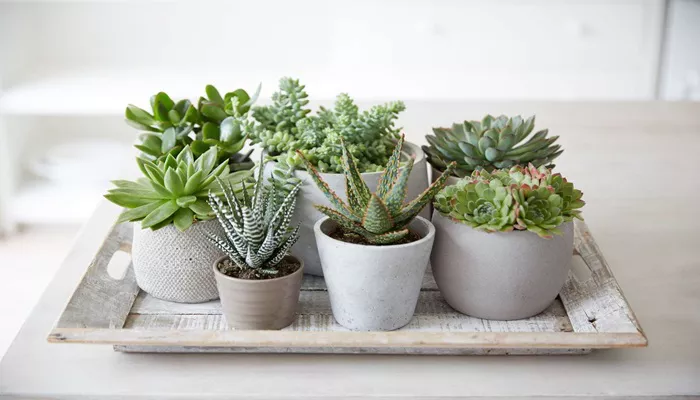Succulents, with their fascinating array of shapes, colors, and textures, have become a popular choice for both seasoned gardeners and novices alike. Their resilience and low maintenance requirements make them ideal for various settings, from home decor to outdoor landscapes. However, one common question among succulent enthusiasts is, “How long can succulent cuttings survive?” In this detailed guide, we’ll explore the factors that influence the survival of succulent cuttings and provide tips on how to extend their lifespan.
Understanding Succulent Cuttings
What Are Succulent Cuttings?
Succulent cuttings are parts of a succulent plant that are removed and used to propagate new plants. These cuttings can come from leaves, stems, or offsets. Succulent propagation through cuttings is a popular method due to its simplicity and effectiveness.
Why Use Cuttings for Propagation?
Using cuttings for propagation allows gardeners to create new plants from existing ones without needing seeds. It’s an efficient way to multiply your succulents and can be particularly rewarding as you watch your new plants grow.
Factors Affecting Survival of Succulent Cuttings
1. Type of Succulent
Different succulent species have varying survival rates as cuttings. For instance, Echeveria and Sedum are known for their ease of propagation, while others, like Aeonium, might be more challenging.
2. Cutting Preparation
The way you prepare the cutting significantly impacts its survival. A clean, sharp cut with a sterile knife or scissors helps prevent diseases. It’s also important to allow the cut end to dry and callous over before planting, which reduces the risk of rot.
3. Environmental Conditions
Succulent cuttings thrive in specific environmental conditions:
Light: Succulent cuttings need bright, indirect light to encourage rooting. Direct sunlight can be too harsh and may cause dehydration.
Temperature: Ideal temperatures for succulent cuttings are between 65°F and 75°F (18°C to 24°C). Extreme temperatures can either cause the cuttings to dry out or rot.
Humidity: Succulents prefer low humidity. High humidity levels can lead to fungal infections and rot.
4. oil Type
A well-draining soil mix is crucial for succulent cuttings. A mix designed for cacti and succulents, often composed of sand, perlite, and peat, provides the right balance of drainage and aeration.
5. Watering
Overwatering is a common issue with succulent cuttings. Initially, cuttings need minimal water. Once roots start developing, you can gradually increase watering. However, ensure the soil is completely dry before watering again.
Survival Timeline of Succulent Cuttings
Initial Survival (0-2 Weeks)
In the first couple of weeks, the cutting is in a critical stage where it needs to adapt to its new environment. During this period, the cut end should be allowed to dry and form a callous. This process helps prevent rot and promotes healthy root development.
Root Development (2-6 Weeks)
As weeks pass, the cutting starts developing roots. This stage can vary depending on the succulent species and environmental conditions. Generally, most succulents will begin to show signs of root growth within 4 to 6 weeks. It’s essential to monitor the cutting for signs of new growth, which indicates successful rooting.
Establishment (6-12 Weeks)
Once the roots are established, the cutting enters the establishment phase. At this point, the cutting should be gradually acclimated to more direct light and regular watering. This phase is crucial for ensuring the new plant grows strong and healthy.
see also: How to Root Succulent Cuttings?
Tips for Maximizing the Lifespan of Succulent Cuttings
1. Use a Rooting Hormone
Applying a rooting hormone to the cut end can enhance root development. While not always necessary, it can be beneficial, especially for more challenging species.
2. Maintain Proper Light Conditions
Ensure your succulent cuttings receive adequate light. Bright, indirect light is optimal. If natural light is insufficient, consider using grow lights to supplement.
3. Avoid Overwatering
One of the most common mistakes is overwatering. Ensure the soil dries out between waterings and avoid letting the cuttings sit in water.
4. Choose the Right Soil
A well-draining soil mix is essential. You can create your own mix by combining equal parts sand, perlite, and peat or purchase a pre-made succulent mix.
5. Be Patient
Propagation can take time. Be patient and avoid disturbing the cuttings too often. Let nature take its course and monitor progress periodically.
Conclusion
Understanding how long succulent cuttings can survive involves recognizing the factors that influence their longevity, including the type of succulent, cutting preparation, environmental conditions, soil type, and watering practices. By providing the right conditions and following best practices for propagation, you can successfully grow new succulent plants from cuttings and enjoy the satisfaction of nurturing them from their early stages.
Whether you’re an experienced succulent enthusiast or just beginning your journey, mastering the art of propagation will enhance your gardening skills and expand your plant collection. With patience and care, your succulent cuttings will thrive, adding beauty and charm to your home or garden.
Related topics:
- How Long Until Succulent Cuttings Root?
- How Much Water Is Used for a Succulent Terrarium?
- How Often Should I Water Succulent Cuttings?


